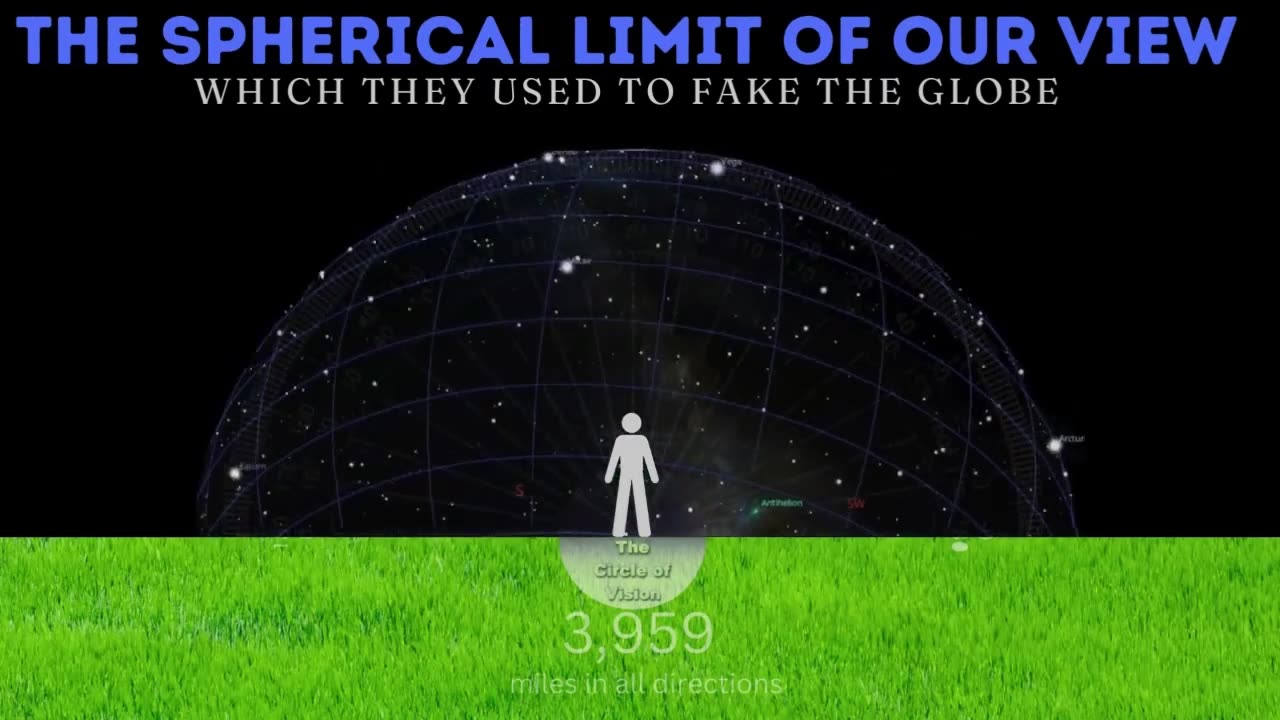Premium Only Content

The Celestial Sphere + angles to Polaris on Flat Earth
The Celestial Sphere + angles to Polaris on Flat Earth
For all the Globers who are laughing at their own model without even knowing it..... https://publish.obsidian.md/shanesql/Library/The+Celestial+Sphere…
Rotating Sky Explorer https://astro.unl.edu/naap/motion2/animations/ce_hc.html
Shane's Flat Earth Dome Model
https://adl.place/shanes-fe-model
https://x.com/AntiDisinfo86/status/1775505383722832148
The Celestial Sphere
https://publish.obsidian.md/shanesql/The+Celestial+Sphere
69 Miles Per Degree mathed out properly
https://publish.obsidian.md/shanesql/69+Miles+Per+Degree
To any observer the night sky appears as if it is a hemisphere resting on the horizon. It is almost as if there is a surface to the heavens on which the stars seem to be fixed. This is why one way to describe star patterns and the motions of heavenly bodies is to present them on the surface of a sphere.
The celestial sphere presupposes that Earth is at the center of the view, which extends into infinity. Three-dimensional coordinates are used to mark the position of stars, planets, constellations, and other heavenly bodies. The Earth rotates eastward daily on its axis, and that rotation produces an apparent westward rotation of the starry sphere.
This causes the heavens to seem to rotate about a northern or southern celestial pole. These celestial poles are an infinite imaginary extension of Earth's poles. The plane of Earth's Equator, extended to infinity, marks the celestial equator. In addition to their apparent daily motion around the Earth, the Sun, Moon, and planets of the solar system have their own motion with respect to the sphere.
The Sun moves about Earth in an ecliptic plane. A line perpendicular to the ecliptic plane defines the ecliptic pole. All of the wandering stars in the sky appear to revolve around the Earth, so their movements are projected onto the celestial sphere nearly on the Earth's ecliptic.
At night the sky appears like a giant dome overhead, or an upside-down bowl set upon the horizon as if on a table.
The bowl of night is studded with the light of thousands of stars, of varying apparent magnitude.Some stars always retain the same spatial orientation with respect to each other; these are the fixed stars.
The fixed stars are distributed among 88 constellations (such as Ursa Major the Big Bear).
To the imagination, many star patterns other than the official constellations are discernible; these patterns are called asterisms (such as the Big Dipper and the Winter Hexagon).
The rim of the bowl of night is the horizon, or azimuth circle.
Azimuth = measured along the horizon, in degrees.By convention, azimuth is measured clockwise from due north.DirectionNorthEastSouthWest North-East-South-West = Never eat slimy worms.
Find north by using the Big Dipper to locate Polaris, the north star. Polaris is closer to true north than a magnetic compass.
Note: In Japan, azimuth is measured clockwise starting from the south.
The point directly overhead
-
 1:53:18
1:53:18
Anti-Disinfo League
1 month agoEvolution debunked - The Myth of Abiogenesis presented by @Taylerv_
5881 -
 LIVE
LIVE
The Dan Bongino Show
2 hours agoBitter Dems Move To Shutdown Government (Ep. 2441) - 03/13/2025
141,271 watching -
 LIVE
LIVE
The Rubin Report
53 minutes ago‘Shark Tank’ Legend Notices Something About Trump’s Canada Plan No One Noticed
2,548 watching -
 LIVE
LIVE
Benny Johnson
50 minutes agoPANIC: Massive Democrat Money Laundering Scandal EXPOSED, ActBlue in Collapse! Kash Criminal Charges
6,368 watching -
 LIVE
LIVE
Steven Crowder
2 hours ago🔴 USAID Shredding Conspiracy | What Everyone's Getting Wrong with Half Asian Lawyer Bill Richmond
40,702 watching -
 1:07:01
1:07:01
Timcast
1 hour agoTrump THREATENS MASSIVE 200% Tariff Against EU As GLOBAL Trade War IGNITES, China Hits Canada
39.7K34 -
 LIVE
LIVE
LFA TV
15 hours agoCORNERED RATS RETALIATE! | LIVE FROM AMERICA 3.13.25 11AM
4,412 watching -
 34:04
34:04
The Big Mig™
14 hours agoAlex Jones Marked For Death
4003 -
 48:29
48:29
BonginoReport
3 hours agoSatanists Dedicate Kansas Capitol to Satan (Ep.159) - 03/13/2025
95.9K128 -
 2:07:09
2:07:09
Matt Kohrs
13 hours agoBreaking Market News: Tariffs, Inflation & Gov'nt Shutdown || The MK Show
20.6K1